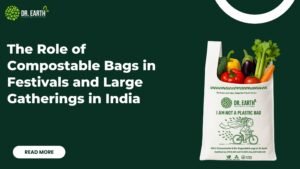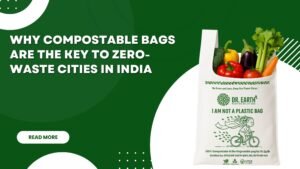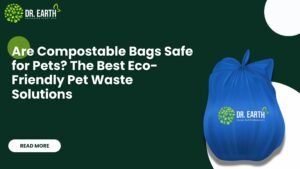
Plastic has become one of the hot environmental issues of our times; from the oceans to the street, plastic waste has shown to be a widespread evil that threatens ecosystems, wildlife, and human health. Annually, around 300 million tons of plastic are manufactured around the globe, most of which end up in landfills, rivers, and our natural settings. Being such a popular material in our use today, plastic happens to be non-renewable; when it goes, there’s usually harm to the Earth in some way, or at least that is often the case.
While plastic products are convenient-think plastic bags and plastic bottles-there’s an expense to having them in the first place. The vast majority of plastic waste doesn’t get recycled, and plastic items can take hundreds of years to break down. In the process, they release harmful chemicals, leach toxins into the soil and water, and break down into microplastics that infiltrate food chains, ultimately impacting human health. Given the scope of the issue, finding alternatives to plastic is crucial. This is where compostable bags come in. Unlike conventional plastic bags, compostable bags would break down naturally and without such residues that are harmful to the human environment.
This blog has explored the hidden costs associated with plastic pollution. The rest of the blog post will therefore show how compostable bags, just like Dr Earth, help reduce the adverse environmental effects while offering the safest, most environmentally conscious alternative.
The Hidden Costs of Plastic Pollution
Of course, plastic has its advantage in terms of convenience; however, the real price of plastic pollution is something different altogether. It extends to many hidden costs in terms of environmental, economic, and health impact not only for the present generations but also for the coming ones.
Environmental Degradation
One of the most evident effects of plastic pollution is the devastating outcome on the environment. The plastic waste is not biodegradable; it just stays in the environment for an unusually long time. Plastics such as bags, bottles, and packaging often find their way into our oceans, rivers, and forests, causing the pollution problem to worsen. It is estimate that 8 million tons of plastic are dump into the ocean every year, suffocating marine life and damaging delicate ecosystems.
Wildlife, including sea turtles, seabirds, and fish, often mistake plastic waste for food. They ingest it, which can lead to internal injuries, starvation, or even death. The problem is compound by the fact that plastic waste is slow to degrade, and as it breaks down into smaller fragments, it becomes even more hazardous. These tiny pieces of plastic, known as microplastics, infiltrate the food chain and pose a danger to marine life and human health alike.
Moreover, plastic pollution clogs waterways and drainage systems, causing flooding in urban areas. In many developing countries, where waste management infrastructure is limited, plastic waste piles up in streets and rivers, contributing to public health hazards and increasing the spread of diseases.
Human Health Risks
Plastic pollution doesn’t just harm the environment—it also poses significant health risks to humans. The chemicals used in plastic products, including bisphenol A (BPA), phthalates, and other toxins, can leach into food and water sources, which leads to severe health problems. It has been found that exposure to these chemicals can cause the disruption of endocrine systems, which leads to hormonal imbalances, birth defects, and even cancer. Plastics also break down into microscopic microplastics, which have been discovered in drinking water, seafood, and even in the air, adding to the dangers to human health.
In addition, burning plastic waste releases harmful pollutants into the air, including dioxins and furans, which are associate with respiratory issues and chronic diseases. Toxic chemicals from plastic waste are a growing concern for developed and developing countries alike.
Economic Losses
The economic factor of plastic pollution is another ‘hidden’ cost often ignore. It costs governments and other local authorities billions every year managing plastic waste. It costs them from cleaning littered beaches, sorting recyclable plastics to dealing with the environmental implications-which in turn increases yearly.
Secondly, plastic pollution impacts tourism and fisheries industries. Tourism thrives with clean beaches and clear water; however, tourists become appalled when beaches become covered with plastic wastes, hence becoming less attractive tourist destinations. Also, fishermen lose some shillings as the debris clogs their nets and destroys them, causing fish contamination.
Contribution to Climate Change
Plastic production is a highly energy-intensive process that relies on fossil fuels. Each step in the plastic lifecycle, from extracting raw materials to manufacturing, transportation, and disposal, produces greenhouse gases. In fact, plastic production and disposal are currently one of the major contributors to global carbon emissions. Plastics are project to account for as much as 15% of global emissions by 2050. Reducing plastic consumption, therefore, becomes an important step toward the broader challenge of climate change.
Recycling: Why It’s Not Enough
Recycling has been touted as the panacea for plastic waste for years, but reality is much more complex. Ideally, recycling would save demand for new plastics and keep plastics out of the landfill. But recycling rates for plastic remain shockingly low, and many types of plastic cannot be recycled well.
Low Recycling Rates
Globally, close to 10% of the plastics are recycled, and the balance either is incinerated or in landfills or the natural environment. The lack of recycling infrastructure, especially for the developing countries, renders much of the plastic in a state of uncollected or improperly disposed of forms. Even in the first-world countries, the process for sorting is expensive and time consuming and not all plastics get recycled.
Quality Degradation
Recycling plastic is not a perfect process. Over time, plastic materials degrade in quality, meaning that plastic that has been recycled multiple times becomes less valuable and may not be suitable for reuse in high-quality products. As a result, many plastics are downcycle into products that have little to no economic value, and after a few cycles, they cannot be recycled further.
Energy Costs
Recycling plastic uses a significant amount of energy, usually coming from fossil fuels. Therefore, recycling, though beneficial in preventing waste in landfills, does not offset the negative impact that the production of plastic has on the environment. In many cases, the energy require to recycle plastic is greater than the savings in energy it affords, especially when the process of recycling is not maximize.
Lack of Global Infrastructure
Whereas in developed countries, many have enacted recycling programs, developing nations often lack the infrastructure that will allow for effective management of waste. Consequently, plastic waste is often transfer to landfills or left lying open in the environment. Moreover, some countries just are not able to recycle plastic material in a particular type; hence, this increases plastic pollution.
What Are Compostable Bags?
Compostable bags, in the light of plastic pollution, become a hopeful alternative. Compostable bags are made of plant-base materials, such as corn starch or potato starch, that break down through a biological process into natural elements. Plastic bags take a couple of centuries to break down, whereas compostable bags break down within a couple of months under the right conditions.
Key Features of Compostable Bags
Compostable bags are made from natural polymers that allow them to decompose safely without harmful residues. These bags break down in a composting environment where microorganisms break them down into organic matter, carbon dioxide, and water. This process enriches the soil, which promotes healthy growth of plants.
Difference Between Compostable and Biodegradable Bags
In between those two words, compostable and biodegradable bags, it is essential to distinguish. Both words bring to mind the fact that the product will eventually decay, but compostable ones stand under more stringent environmental criteria. While biodegradable ones break down for years and maybe even leave toxic residues in the environment, compostable ones are certified to degrade completely without leaving any harm.
The Advantages of Compostable Bags
Compostable bags have numerous benefits that make them far better than plastic. Here are some of the benefits:
Environmental Benefits
Compostable plastic bags greatly reduce the environmental impacts of plastic bags compared to other alternatives. Plastic bags are made of natural products and decompose completely to leave no dangerous substance. Using compostable bag options can help decrease plastic material going into landfills or water bodies. Such factors assist in reducing the movement and dispersal of micro-plastics in the ecosystems thereby making the environment clean.
Health and Safety Benefits
Compostable bags are free of toxic chemicals used in plastics, which include BPA and phthalates. When decomposing, these bags naturally decompose, and their decomposition does not yield harmful chemicals. This has the positive effect of never contaminating soil, water, or even food products as a byproduct of consumption. Hence, they would be much safer for man and for wildlife.
Economic Benefits
Though compostable bags are relatively costlier than the normal plastic bags, the advantages gain in the long term are much more significant compare to the cost incurred initially. Companies and individuals would reduce the costs associated with the disposal of plastic wastes and plastic pollution through using compostable bags. This has also open up a new economic opportunity in the sustainable goods sector, with people being employe and giving impetus to the green economy.
How Dr. Earth Can Help
Dr. Earth has positioned itself at the forefront of the compostable bag revolution, providing high-quality bags that are certified to meet international environmental standards. Thus, the bag is made from sustainable materials such as corn and potato starch. Whether you are an individual looking to reduce your carbon footprint or a business aiming to make a more sustainable impact, Dr. Earth’s compostable bags offer a simple yet effective solution.
Join the global movement towards a plastic-free future by choosing Dr. Earth compostable bags and help protect our environment, improve human health, and contribute to a cleaner, greener world.
Conclusion: Moving Towards a Sustainable Future
Plastic pollution is an issue affecting everyone, everywhere. Although recycling efforts are being continue, they are still insufficient to solve the scale of the problem. Compostable bags offer a better alternative, providing a way to reduce the use of plastic without compromising on functionality. By choosing sustainable products like Dr. Earth’s compostable bags, we can make a collective effort to combat plastic pollution and promote a more sustainable future for all.
FAQs
Q- 1. What are compostable bags?
Ans-Manufacturers make compostable bags from plant-based materials like corn starch or sugarcane, which break down naturally when composted.
Q- 2. How do compostable bags benefit the environment?
Ans-They break down rapidly without giving off toxins and reduce plastic pollution while enriching the soil.
Q- 3. Are compostable bags safe for humans and animals?
Ans-Yes, they contain no harmful chemicals and cannot contaminate food, water, or soil.
Q- 4. Can compostable bags be recycled?
Ans- Compost food waste in special composting facilities; do not recycle it.
Q- 5. Are compostable bags more expensive than plastic bags?
Yes, but environmental savings pay off in the long term.
Share:
Related Posts














